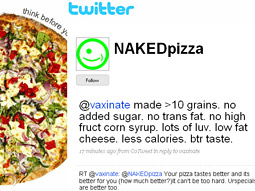 Have you ever tried to tap out a song beat to a friend, then you have the friend guess what you are tapping? It seems so obvious to you what the song is, because the music is playing in your head. Your friend, however, only has the benefit of your tapping… and it turns out that only one in 40 can guess a tapped out tune correctly, at least according to dissertation research by Elizabeth Newton in 1990.
Have you ever tried to tap out a song beat to a friend, then you have the friend guess what you are tapping? It seems so obvious to you what the song is, because the music is playing in your head. Your friend, however, only has the benefit of your tapping… and it turns out that only one in 40 can guess a tapped out tune correctly, at least according to dissertation research by Elizabeth Newton in 1990.
I think marketing experts and many business owners are often The Tappers in the scenario of building a brand message. Sometimes we forget to think about the end user. Recently, I was The Tapper with a client. I was so excited about a project and crafted some copy that featured good flow, strong page-to-page transitions and really elevated the brand level… or so I thought. I was out to impress the CEO of the company, my boss, any future judge for copywriting. Well, my boss liked the copy. The client reworked it… a lot. It is a very recent dagger to the heart, but a good reminder. When telling a story, especially a brand story, it is important to consider what it is like to be The Listener. It helps if you can paint the tune with your marketing message instead of just tapping out noise.
Here are some tips from Made To Stick on how to effectively develop your marketing or public relations message:
1. Keep it Simple.
2. Add the Unexpected.
3. Be Concrete.
4. Be Credible.
5. Be Emotional.
6. Make it a Good Story.
This is the example that the authors, Chip Heath and Dan Heath, provide in the book. When President John F. Kennedy spoke about traveling to the moon, he didn’t use his CEO voice and declare, “Our mission is to become the international leader in the space industry through maximum team-centered innovation and strategically targeted aerospace initiatives.” Not quite. President Kennedy kept it simple, and made a call to “put a man on the moon and return him safely by the end of the decade.” That’s not such a fancy statement. But it captivated a nation … and many beyond. That’s a successful message.

 I am a definite advocate for strategizing and planning your social media marketing before jumping head-first into these forums with your business at risk. For the most part, social media can be harmless, but it also puts your business and brand image online for a full exposure.
I am a definite advocate for strategizing and planning your social media marketing before jumping head-first into these forums with your business at risk. For the most part, social media can be harmless, but it also puts your business and brand image online for a full exposure.  I’ve sat around at dinner parties debating whether or not Twitter is a passing fad that will be gone in a year or a social networking tool with some muscle. I’ve been arguing that it is great for directing people to Web sites… And yesterday, a
I’ve sat around at dinner parties debating whether or not Twitter is a passing fad that will be gone in a year or a social networking tool with some muscle. I’ve been arguing that it is great for directing people to Web sites… And yesterday, a  When it comes to social media marketing, I constantly hear clients say, “I just don’t get it. Who has time?”
When it comes to social media marketing, I constantly hear clients say, “I just don’t get it. Who has time?”  Blogger
Blogger  Discussion at last night’s
Discussion at last night’s  The
The